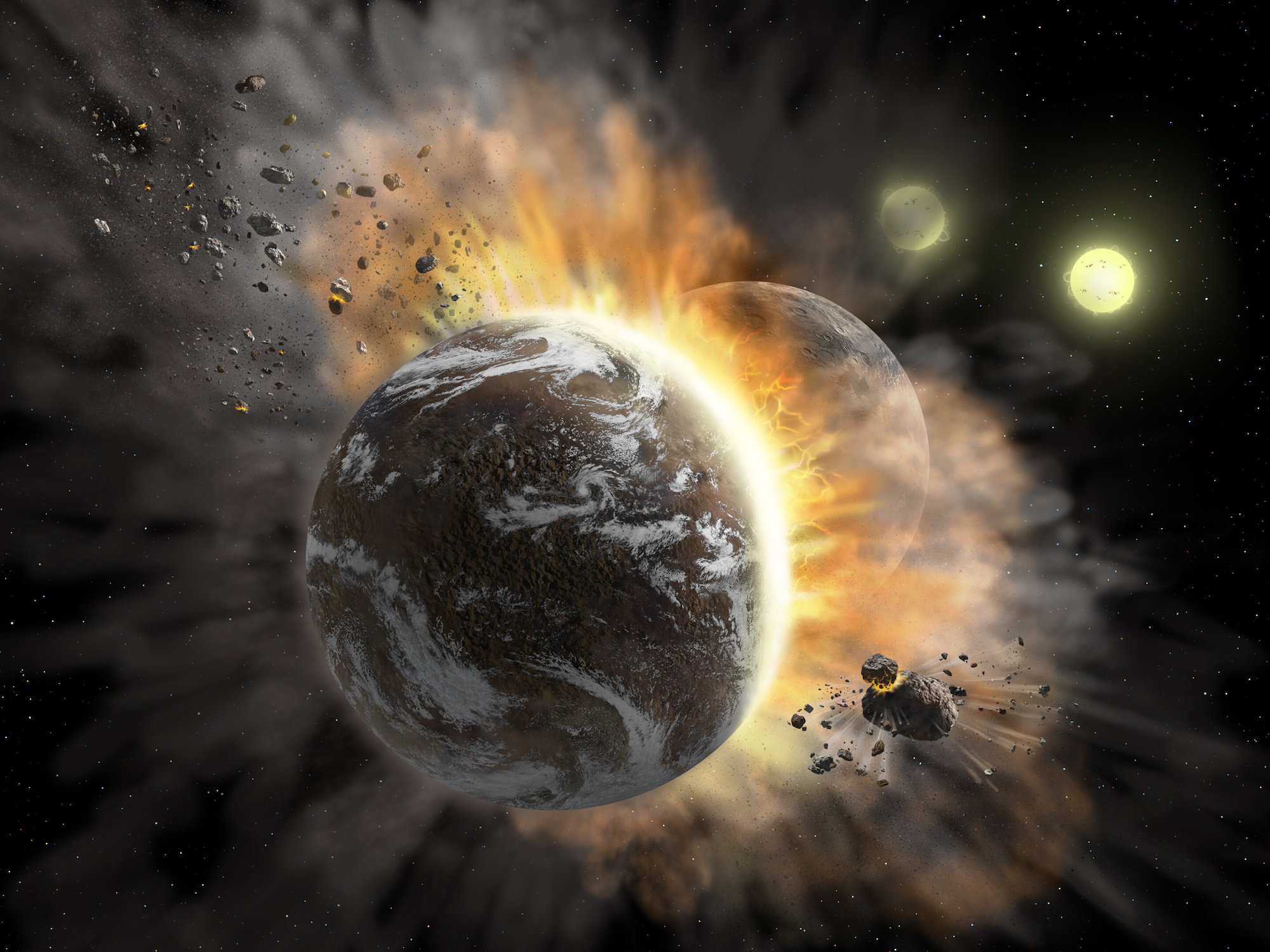In a Distant Galaxy, Colliding Exoplanets Are Upending What We Knew About Solar System Formation
Looks like planets can smash into each other much later in life than astronomers thought.

Solar systems form in a school of hard knocks.
Take ours, for example: Earth had barely cooled 4.5 billion years ago when it got slapped in the face by a renegade Mars-size rock, reducing both bodies to giant balls of lava. Scientists believe this cosmic collision spewed so much debris into the air that it eventually coalesced into Earth's moon — a beautiful partnership born from chaos.
Collisions like these are common in young solar systems, but become much rarer as time rolls on: Large planets fall into line and host stars either swallow or blow away smaller chunks of debris. Now, NASA astronomers think they may be witnessing a violent exception to that pattern in a solar system far, far away.
In the star system BD +20 307 — a binary system roughly 300 light-years from Earth — it appears that two Earth-like exoplanets have crashed into each other, erupting in a hot cloud of dust and debris that's visible to infrared telescopes. At more than 1 billion years old, the solar system being observed is fully mature, but according to conventional wisdom, that means it should not host planetary smashups like this one. This never-before-seen type of collision suggests that solar systems, like people, can still struggle to pull themselves together late in life.
"This is a rare opportunity to study catastrophic collisions occurring late in a planetary system's history," Alycia Weinberger, a staff scientist at the Carnegie Institution for Science in Washington, D.C., and author of a recent paper on the collision, said in a statement.
A cosmic dust-up
Clouds of dust are ubiquitous in space. Planets form when the dust particles floating around young stars clump together and grow over millions of years into large, gravitationally dense objects. By the time planets settle into their orbits around a star, much of the smaller particles of dust and debris in the environment have either been pulled into the star as fuel, or swept away by solar winds into a ring of schmutz on the solar system's cold outer edges.
Our solar system's frigid Kuiper Belt, which stretches for hundreds of millions of miles beyond the orbit of Neptune and contains thousands of rocky objects (including the dwarf planet Pluto), is a prime example of this. The dust, asteroids and planetoids out there are extremely cold, due to their distance from the sun.
Sign up for the Live Science daily newsletter now
Get the world’s most fascinating discoveries delivered straight to your inbox.
Ten years ago, when astronomers first detected traces of the exoplanet collision in BD +20 307 10, they were surprised to find a cloud of dust that appeared much warmer than a far-out asteroid belt should be — up to 10 times hotter than the Kuiper Belt. That finding suggested that the cloud wasn't just part of an asteroid belt, but the remnants of a relatively recent, smashingly violent and energetic event — a cosmic collision.
A decade later, Weinberger and her colleagues used observations from a satellite called the Stratospheric Observatory for Infrared Astronomy (SOFIA) to check in on the embattled star system. In their recent study (published in The Astrophysical Journal), the researchers found that the infrared brightness of the cloud had increased by about 10%, meaning there was significantly more warm dust in the system than there was just a decade ago.
According to the researchers, this is further evidence that the exoplanet crash occurred relatively recently (likely within the past few hundred thousand years), and the aftermath is actively playing out before our telescope lenses, possibly resulting in an ongoing series of smaller collisions that continue spraying the solar system with more warm dust. If that's the case, it means planetary collisions could occur much later in a solar system's lifetime than was previously thought possible.
- The 12 Strangest Objects in the Universe
- 15 Unforgettable Images of Stars
- 9 Strange Excuses for Why We Haven't Met Aliens Yet
Originally published on Live Science.


Brandon is the space/physics editor at Live Science. His writing has appeared in The Washington Post, Reader's Digest, CBS.com, the Richard Dawkins Foundation website and other outlets. He holds a bachelor's degree in creative writing from the University of Arizona, with minors in journalism and media arts. He enjoys writing most about space, geoscience and the mysteries of the universe.










